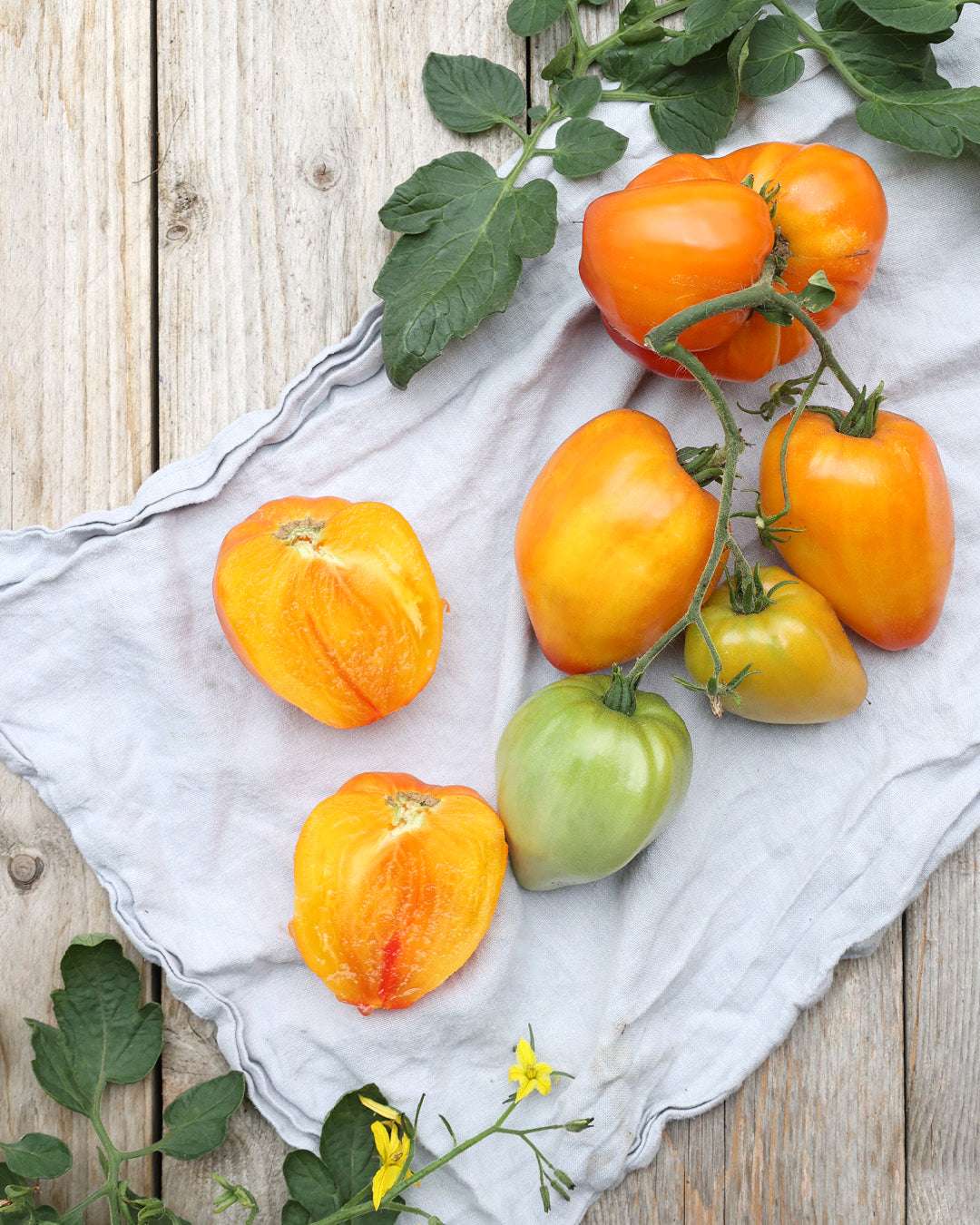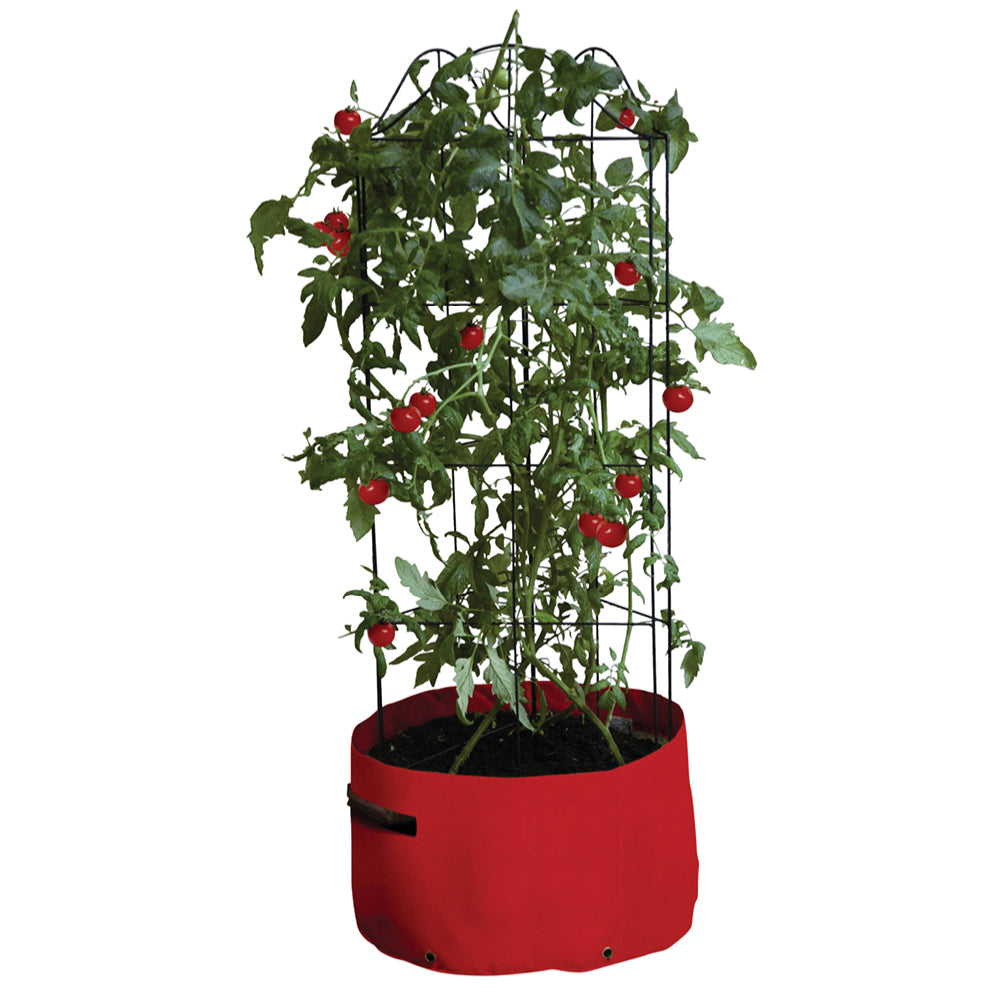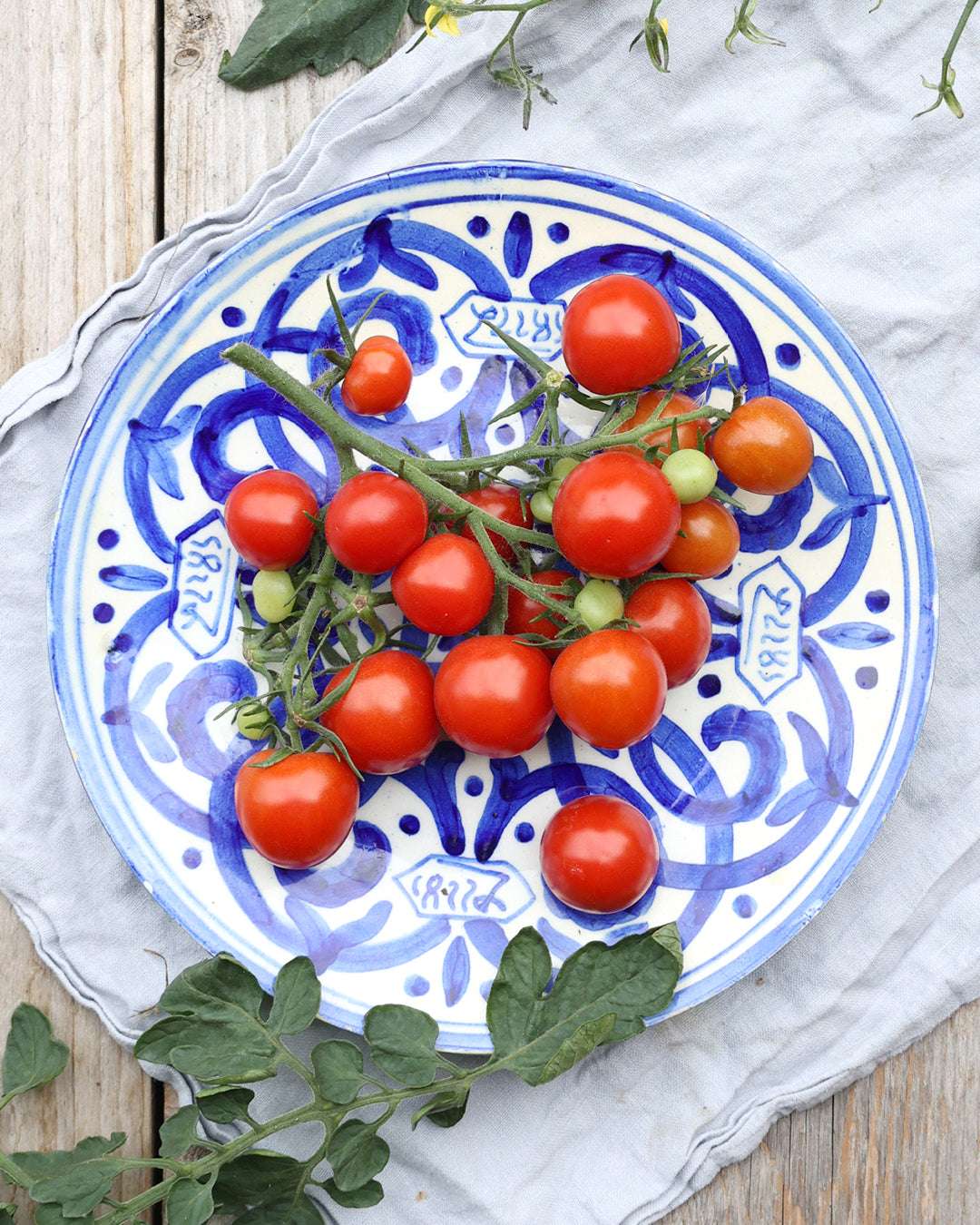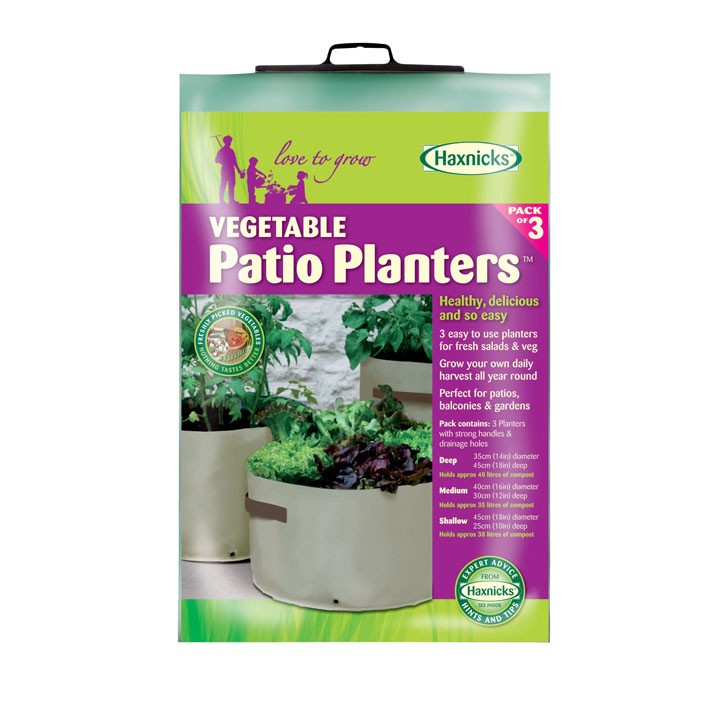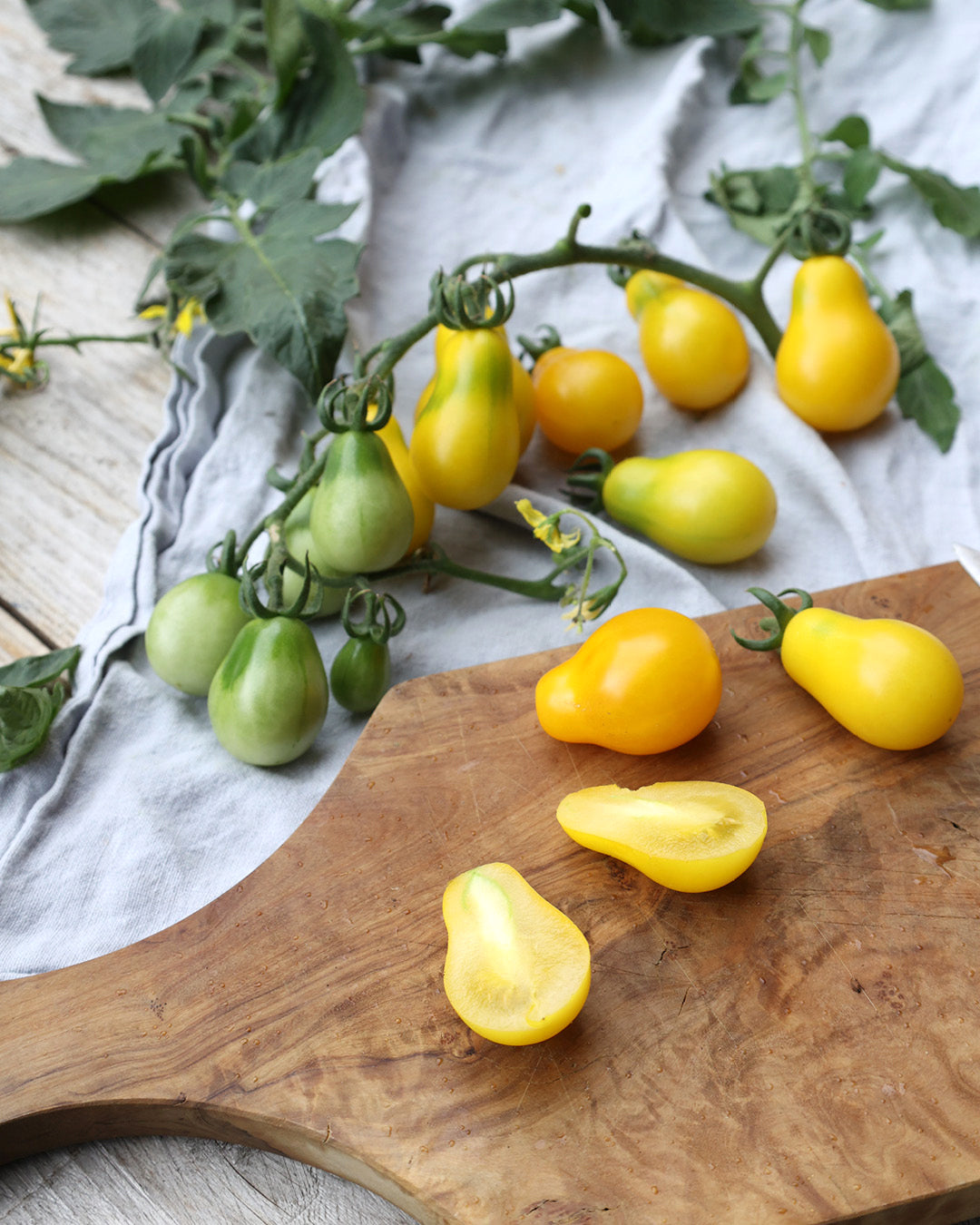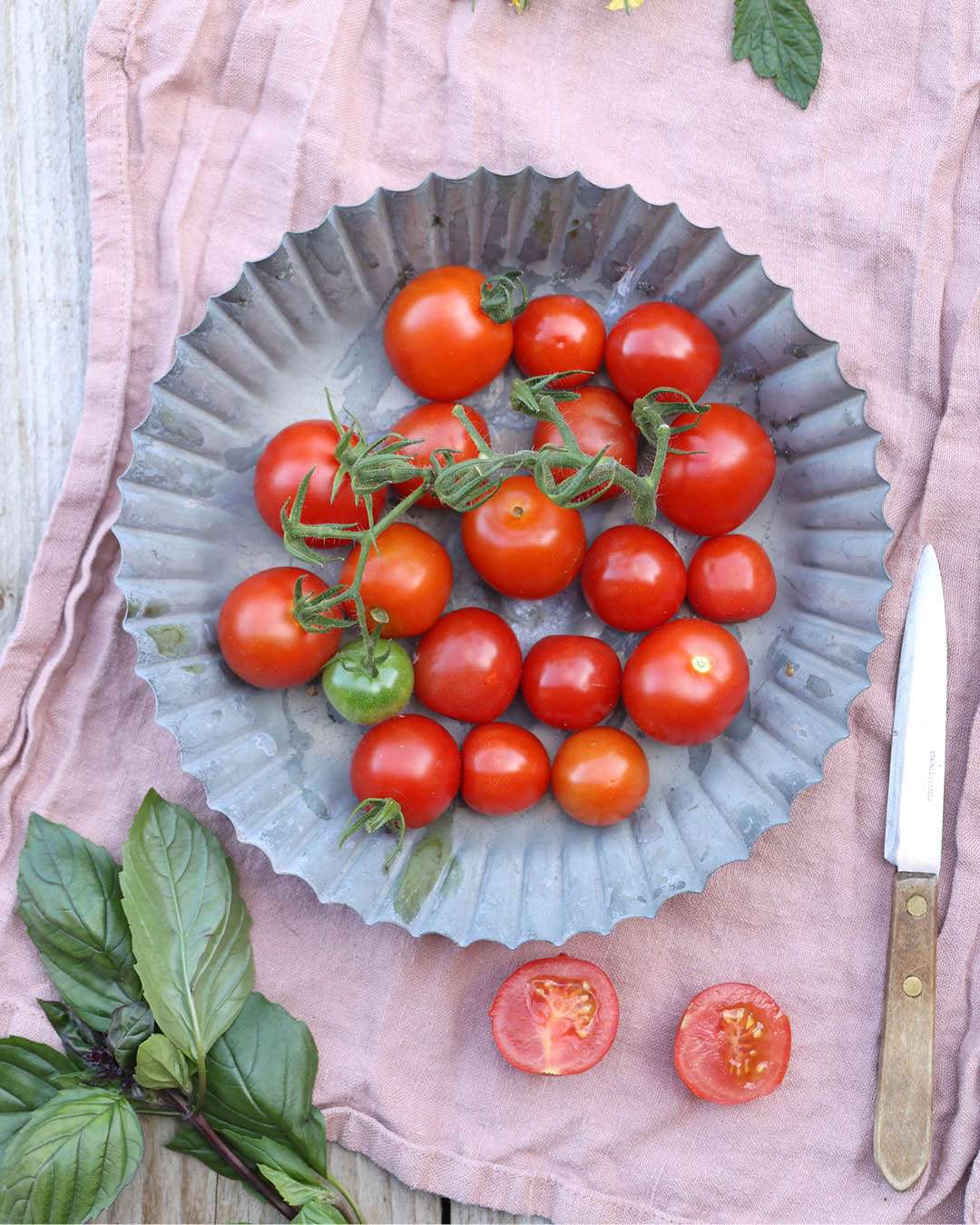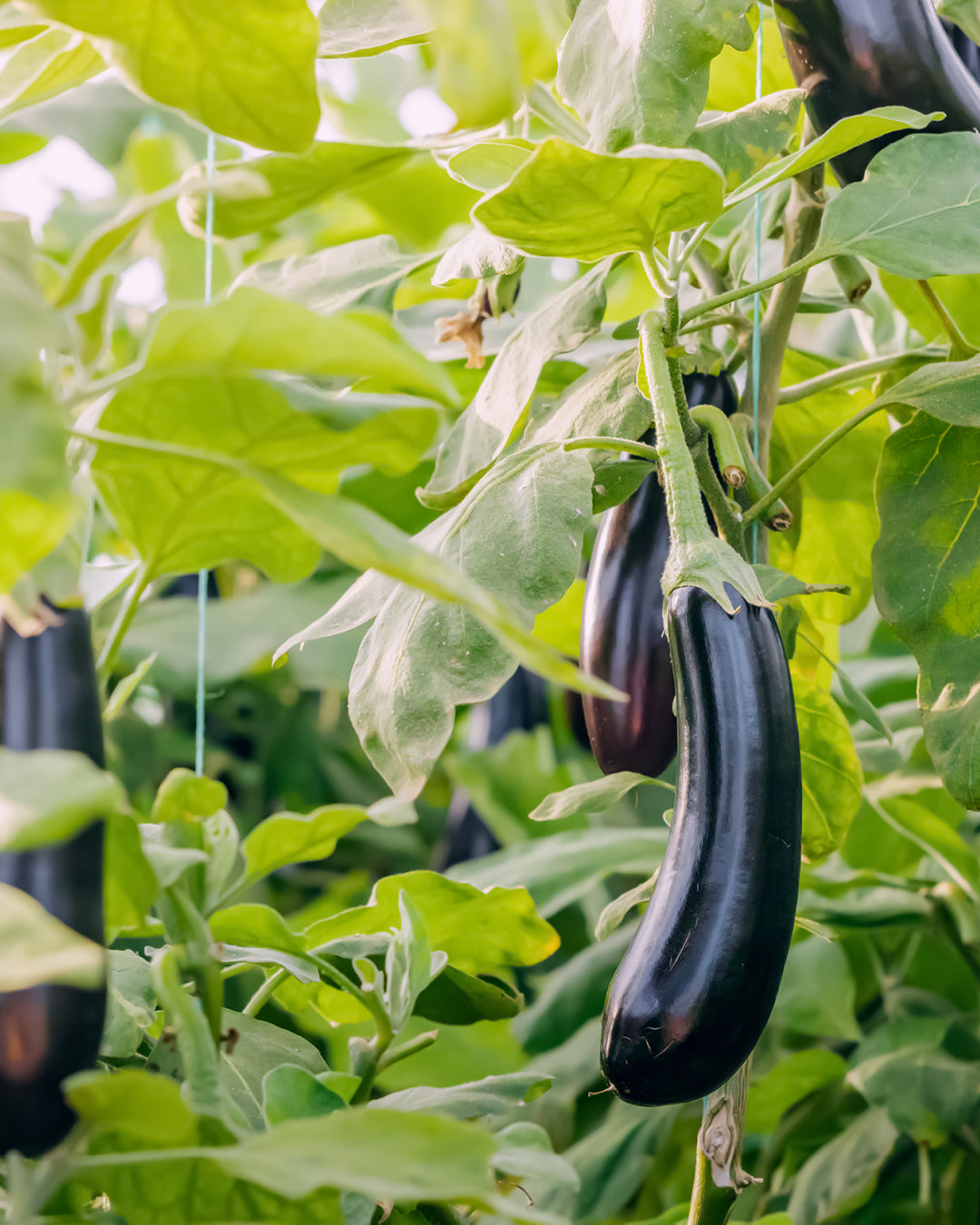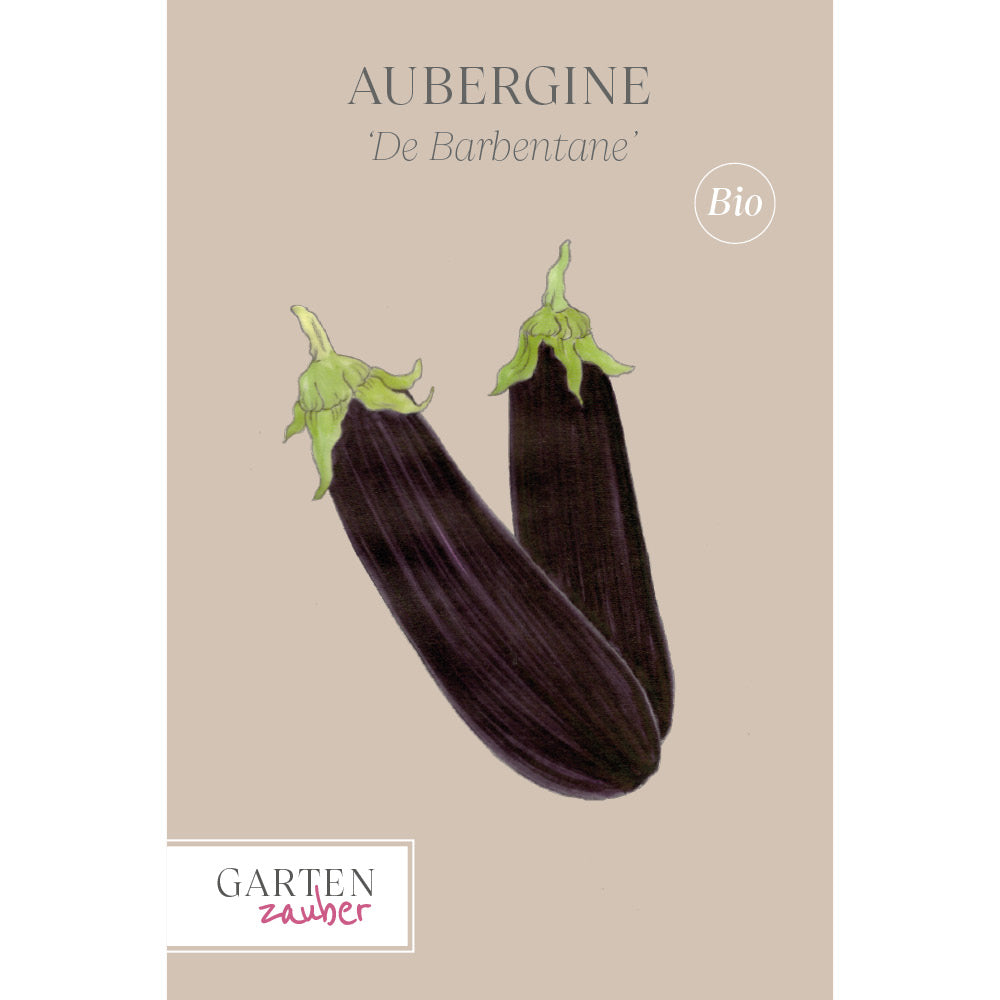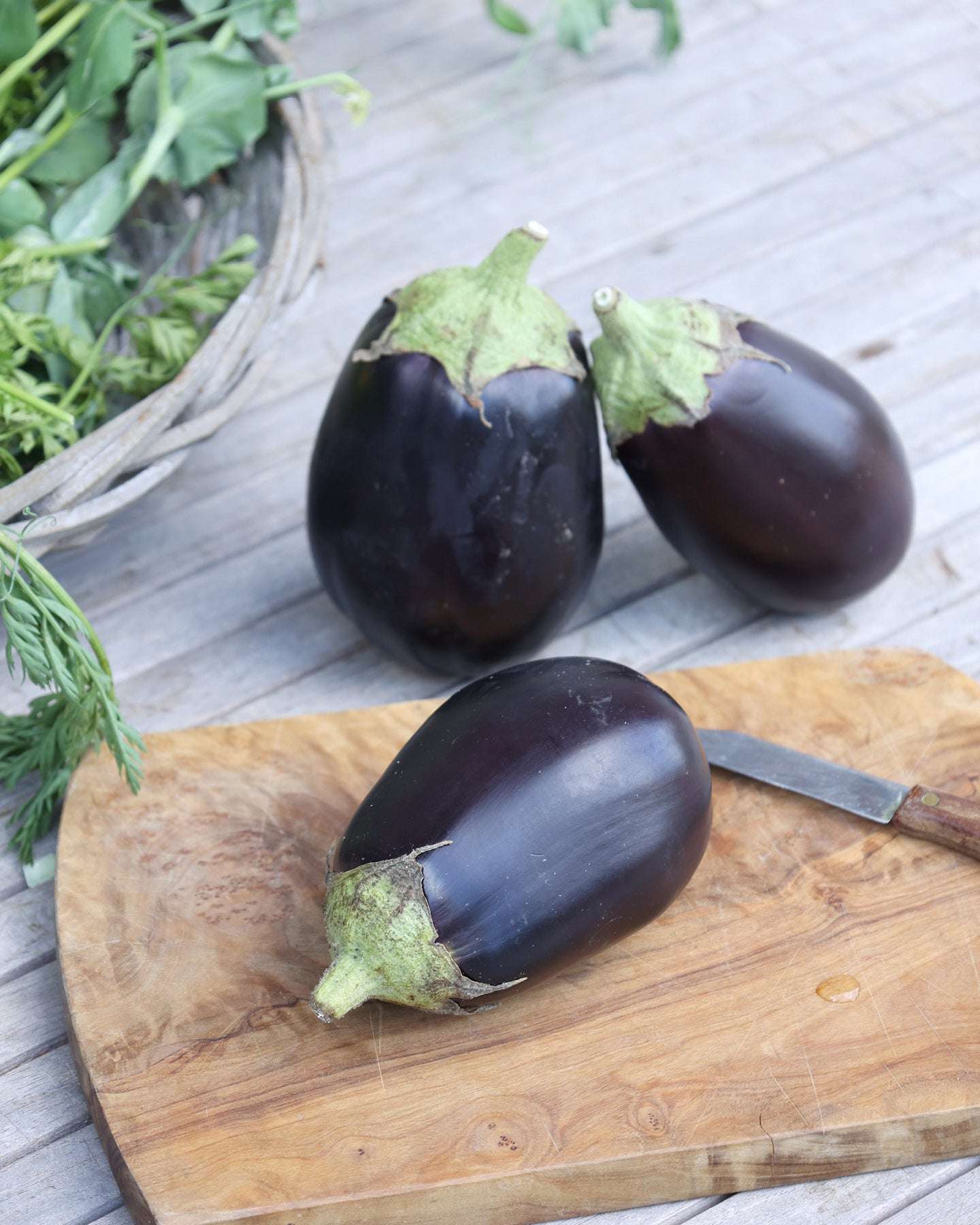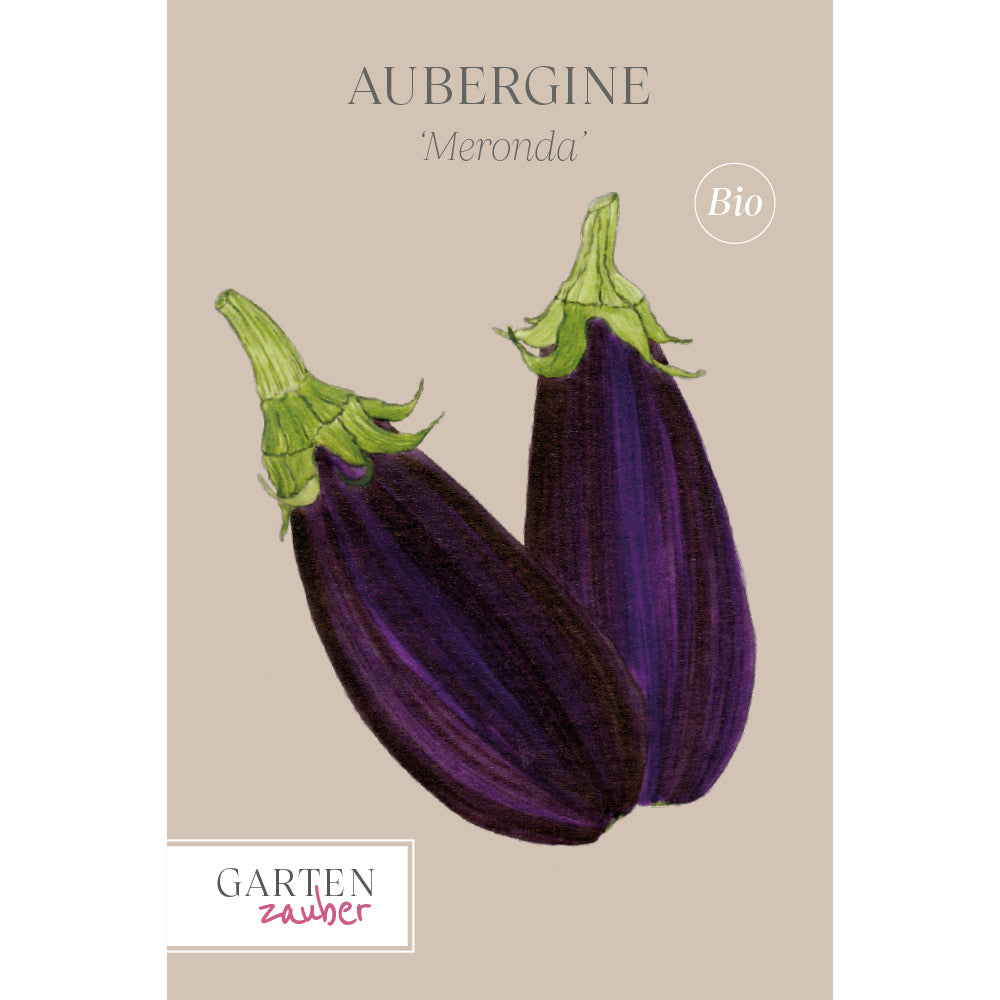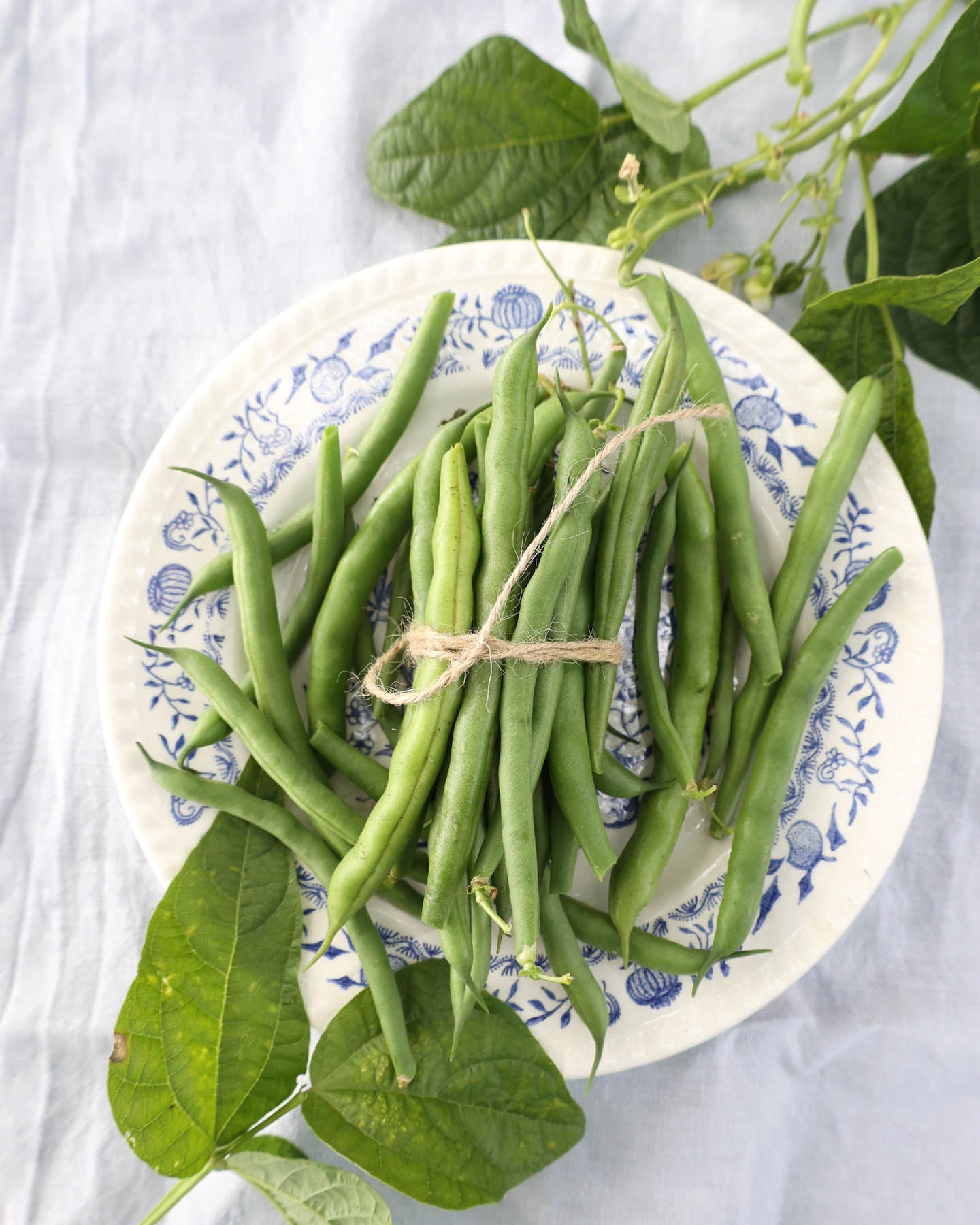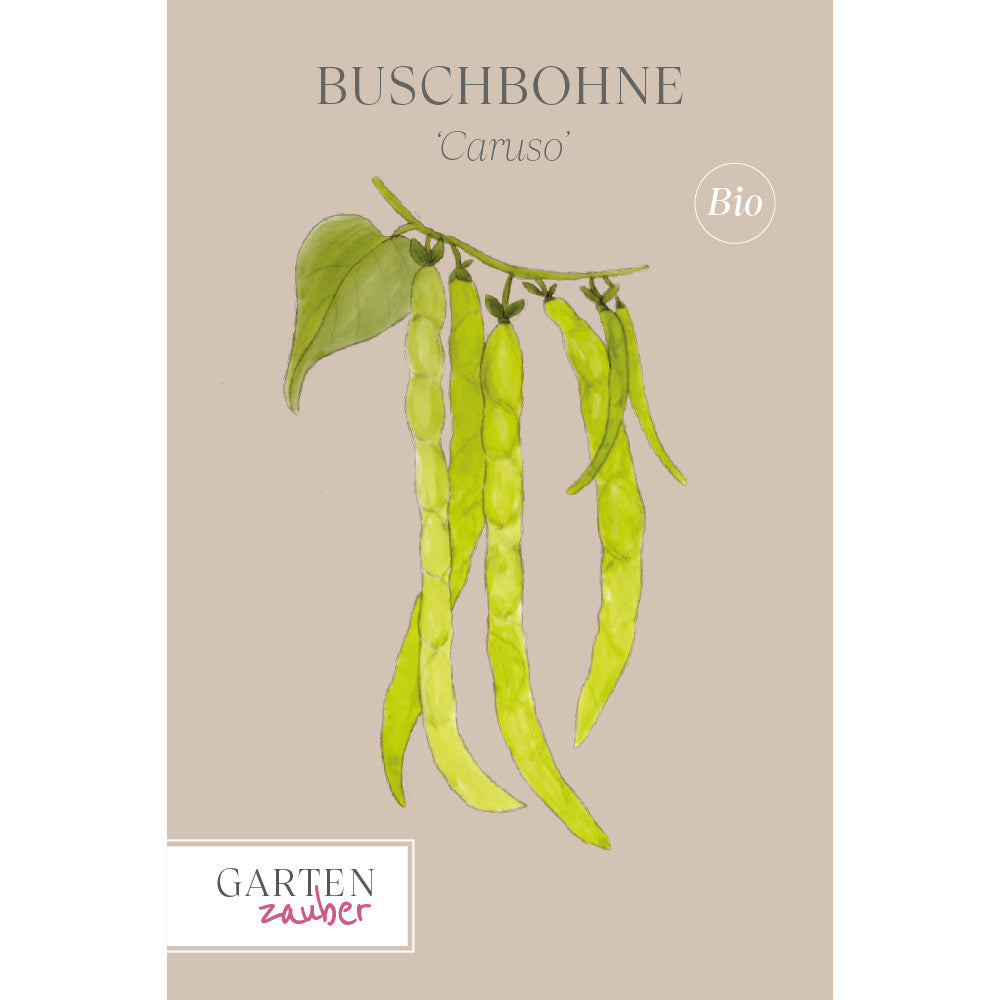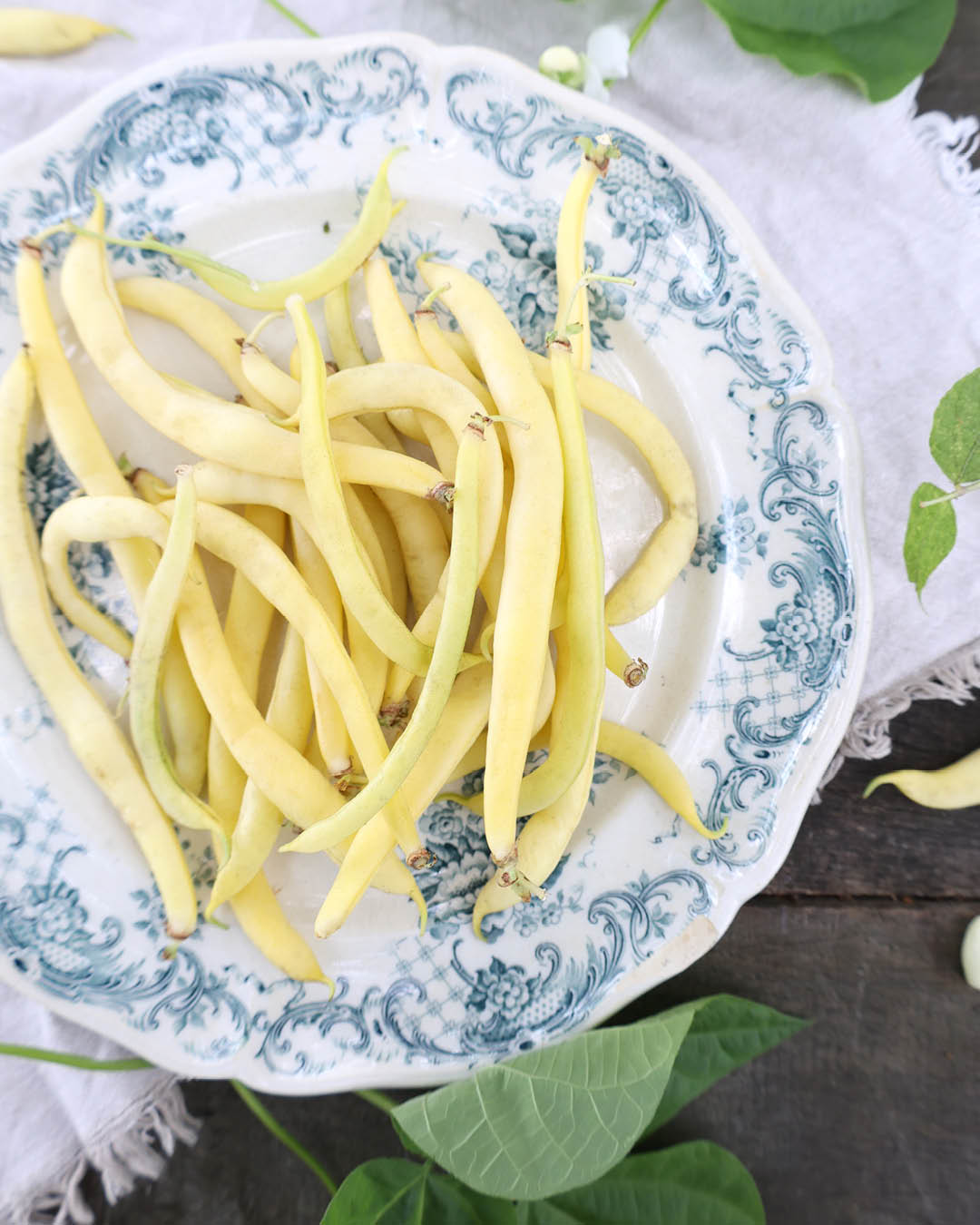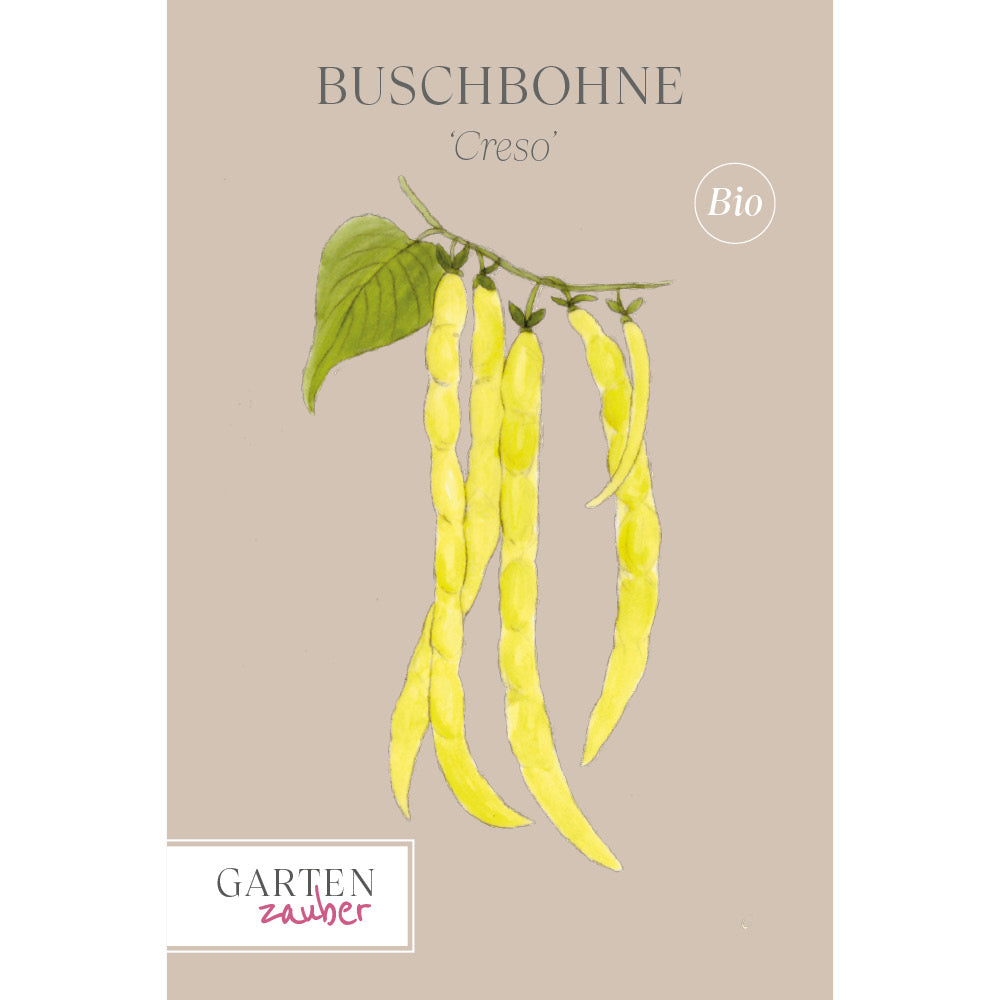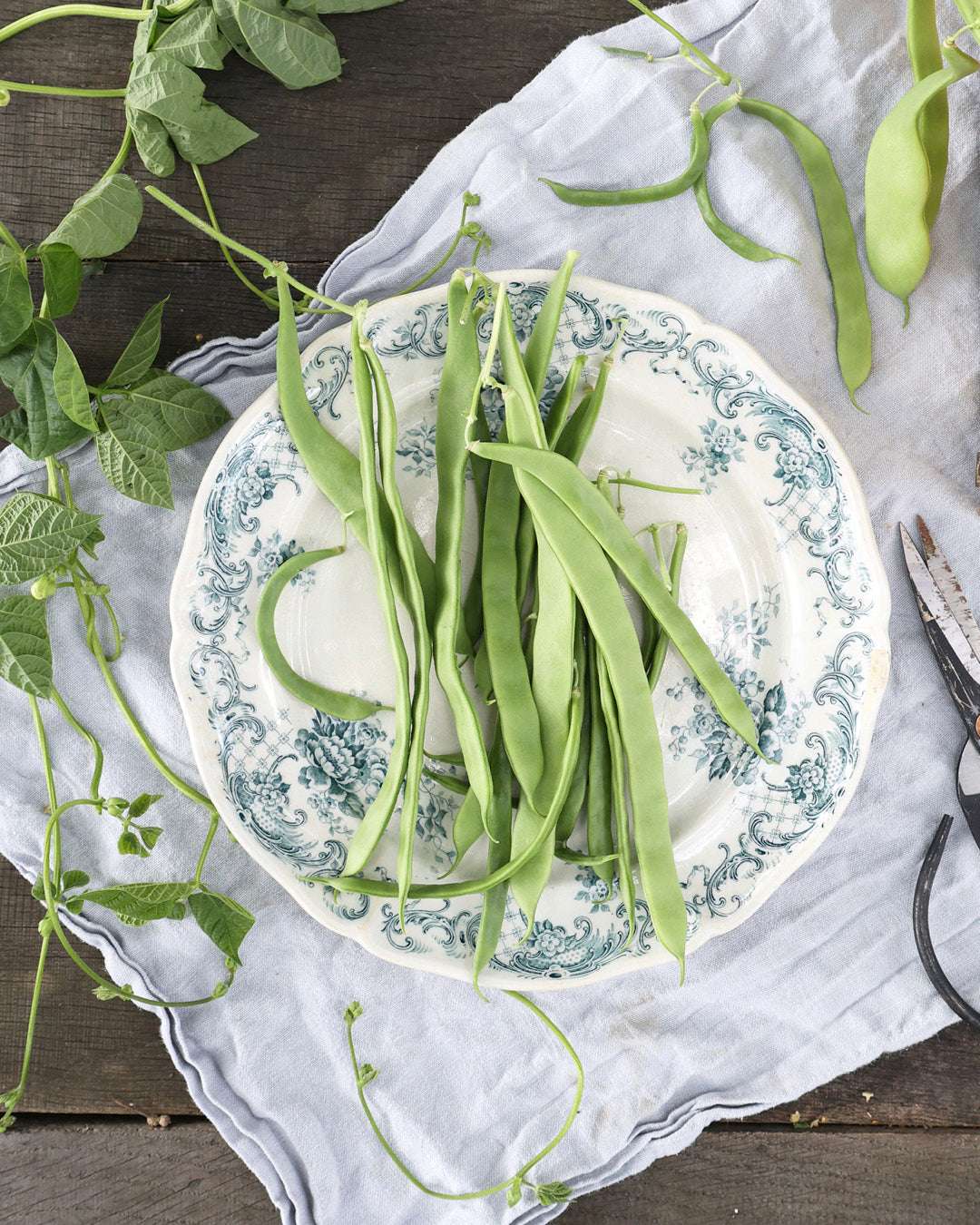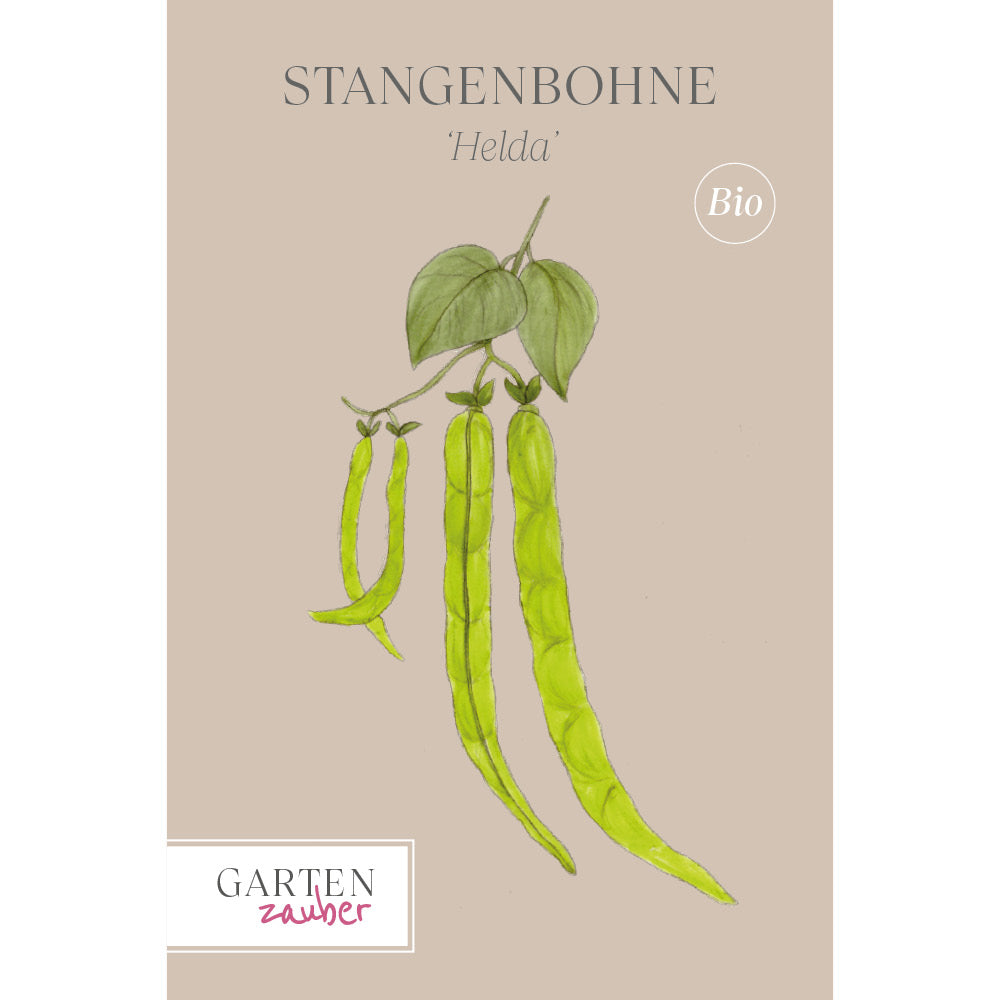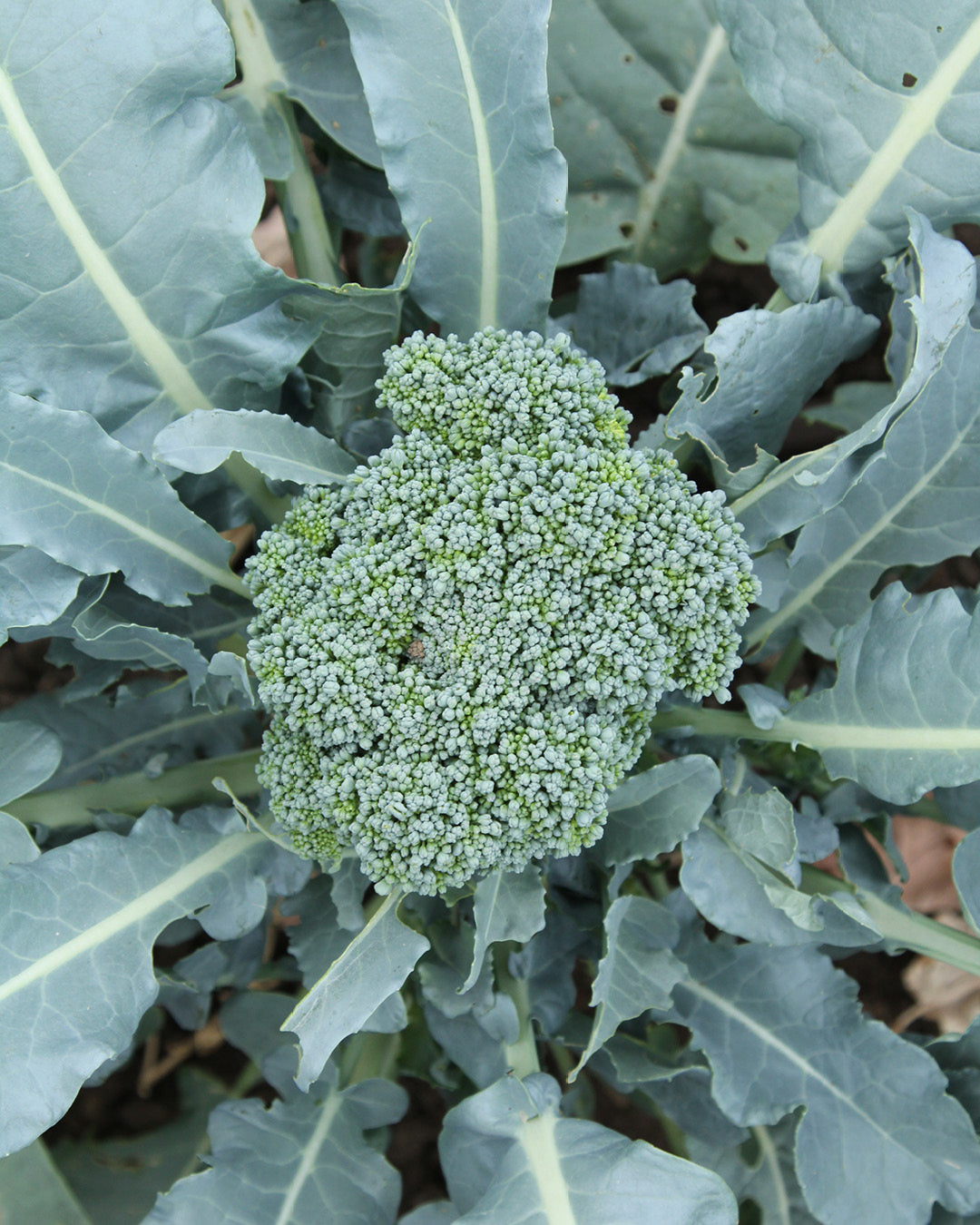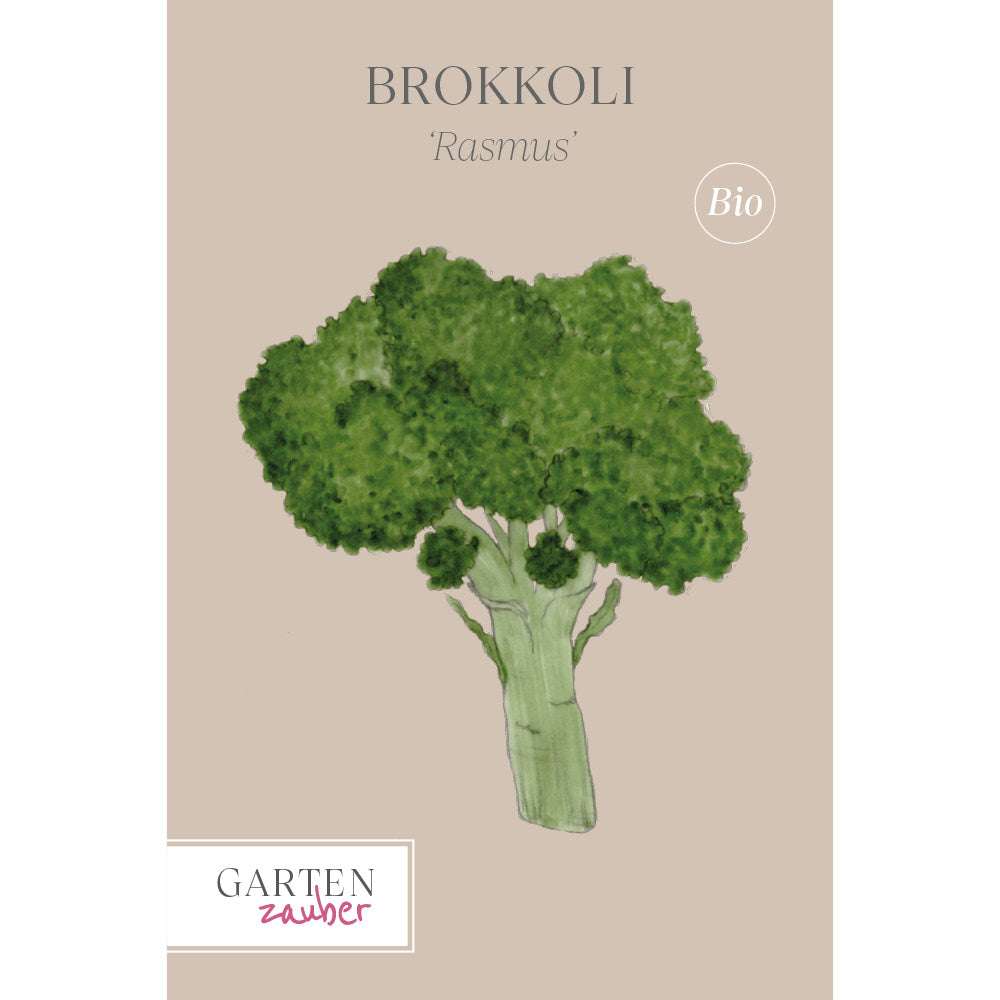Tomatoes and peppers in plant bags
Whether on the terrace, balcony, or in the garden, these practical planting bags make it easy to grow wonderful vegetables both in the country and in the city. However, there are a few small things to keep in mind.
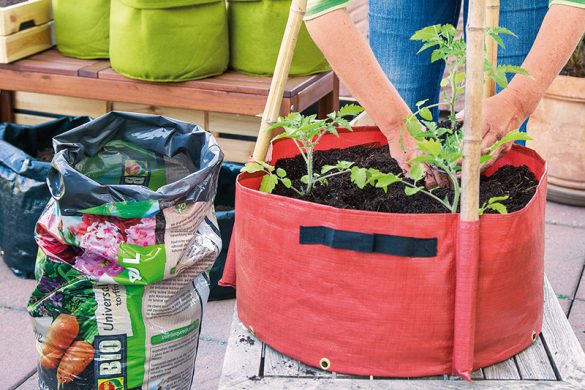
tomatoes
Sun-ripened tomatoes immediately come to mind when you think about growing your own vegetables. And rightly so. Homegrown tomatoes don't have to travel long distances and can remain on the plant until fully ripe. This is clearly noticeable in the flavor.
Planting tomatoes
Tomatoes require a lot of water and nutrients. Therefore, plant the plants in a large container with a capacity of at least 15 liters. Use good, fertilized potting soil. Plant tomato plants slightly deeper than they were previously in the pot. They will then develop additional roots along the stem. Tomato plants need support. Use stakes or let the plant grow upwards on a string. If possible, place tomato plants in a sunny spot under a roof to protect them from blight.
Caring for tomatoes
Many tomato varieties are grown as single-stem plants. This means that side shoots must be removed regularly. This isn't absolutely necessary for wild tomatoes and cocktail tomatoes. It's sufficient to thin these plants occasionally. Simply cut back any unwanted shoots. Despite the fertilized soil, tomatoes need to be regularly fertilized with a liquid fertilizer starting six weeks after planting. When watering, make sure the tomato leaves don't get wet. Water regularly and generously.
Harvesting tomatoes
Tomatoes begin ripening on the lower vines in July. They are picked gradually as soon as the fruits turn red. If any tomatoes are still green on the plant in the fall, they can be placed in a dark but warm place to ripen.
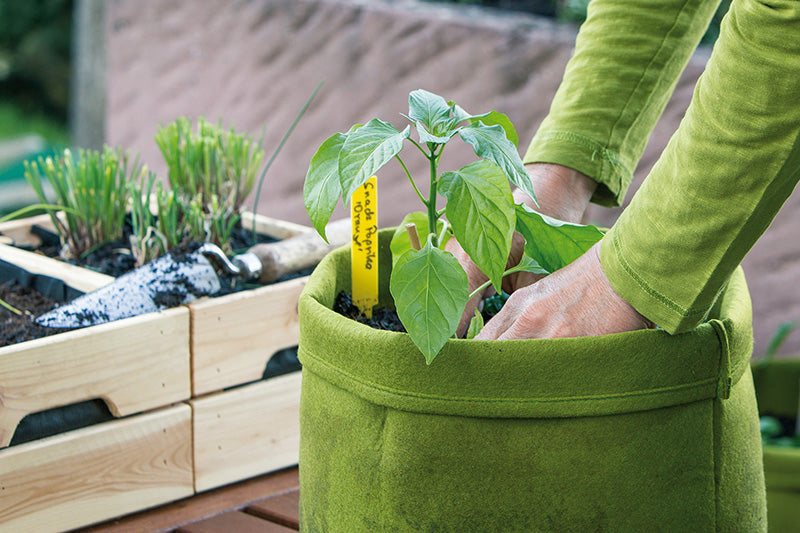
paprika
Peppers require even more warmth than tomatoes. Mature block peppers only grow on balconies during exceptionally hot and sunny summer months. The slightly smaller snack peppers or pointed sweet peppers are easier to grow.
Planting peppers
Like tomatoes, pepper plants are heavy feeders. The plants don't grow as large as tomatoes, so a 10-liter pot or planting bag filled with good vegetable soil is sufficient. Peppers can be underplanted with herbs such as basil. Place the pots in a warm, sunny, and wind-protected location.
Caring for peppers
Remove the first flower at the top of the plant, the so-called "king flower." This will encourage pepper plants to branch out better. As soon as the first fruits appear, support the shoots with a stake. Water moderately at first, but increase watering liberally once fruiting begins. Starting six weeks after planting, fertilize weekly with a liquid fertilizer.
Harvesting peppers
Fully ripe fruits taste best, which are yellow, red, or orange depending on the variety. Peppers also ripen gradually from the bottom up.

The content of this article is from the book:
Dorothea Baumjohann
Box gardening– Mobile self-sufficiency step by step
Price: €(D) 15.00 / €(A) 15.50 / sFr 21.90
ISBN 978-3-8354-1599-7
Publisher: blv
Flexible, delicious, and healthy: This book demonstrates how mobile self-sufficiency works using boxes, tubs, and square beds. Author Dorothea Baumjohann explains which plants—from vegetables and herbs to small fruit bushes—are suitable and provides the basics so that even gardening novices can get along well.

